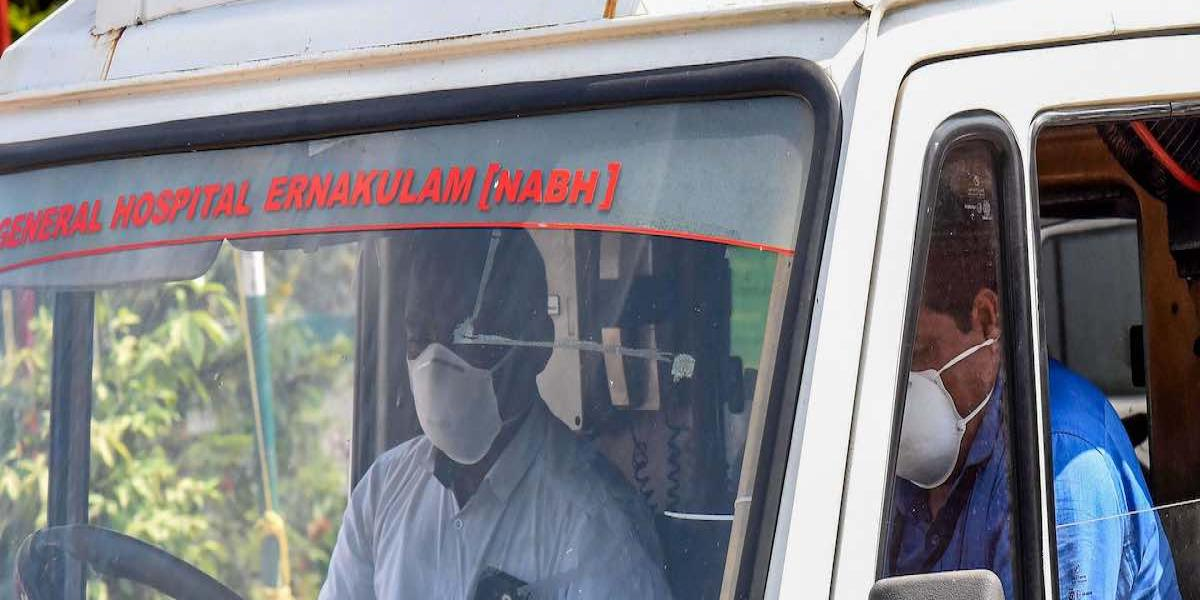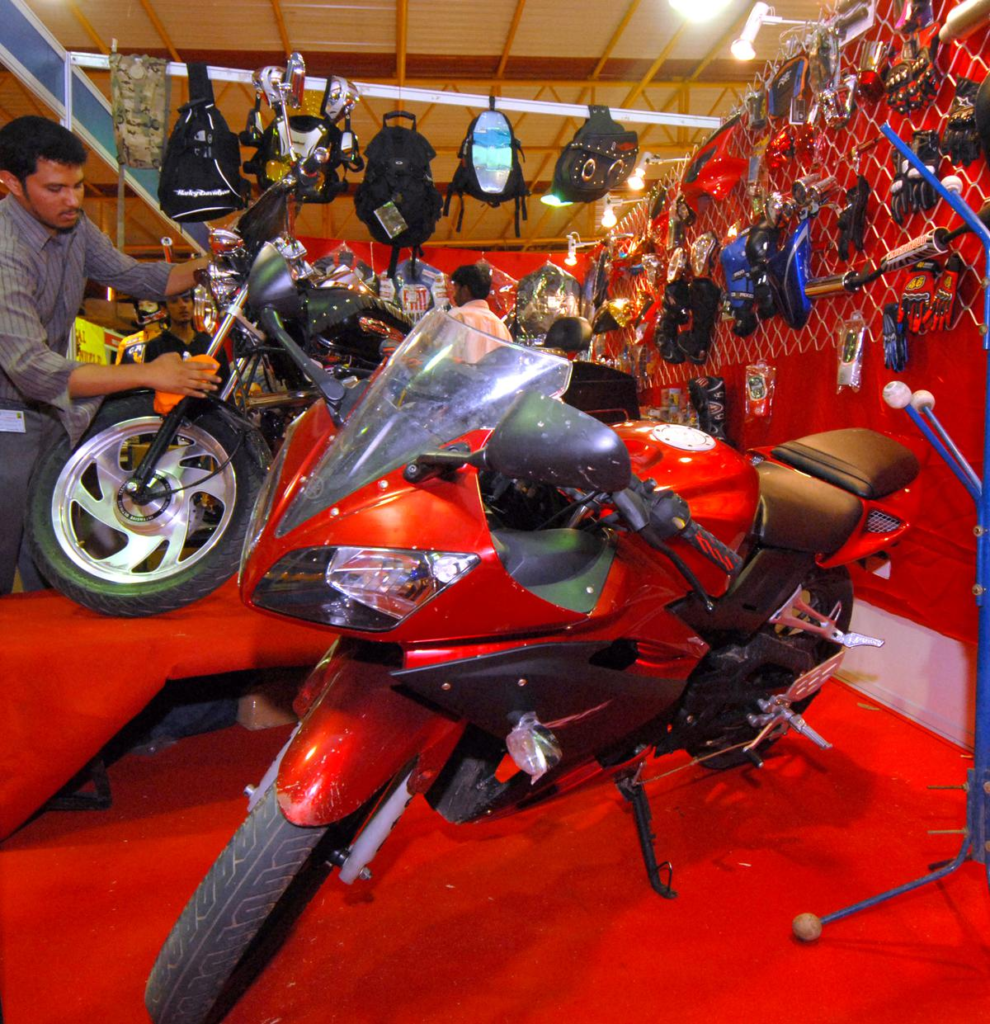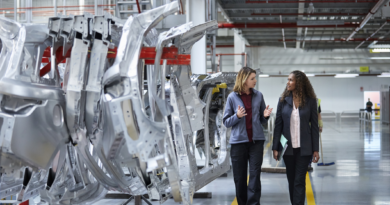Free Ambulance Driver course (6Months)
Ambulance Driver:
Brief Job Description
Individuals at this job need to drive ambulance and transport sick, injured, or convalescent persons. Individual needs to place patients on stretcher and load stretcher into ambulance, usually with help of the attendant.
Personal Attributes
This job requires the individual to drive continuously for long hours under tiring and demanding physical and city traffic conditions. Individual must be very calm and physically fit with the ability to control aggressive patients. The individual should be skilful to drive in a manner that he avoids sudden motion detrimental to patients.

Practice HSE and security related guidelines:
Description
This OS unit is about being aware of, communicating and taking steps towards minimizing potential hazards and dangers of accidents on the job and maintaining a clean work environment

Elements and Performance Criteria
Communicating potential accident points
To be competent, the user/individual on the job must be able to:
PC1. spot and report potential safety issues while driving
PC2. follow rules and regulations laid down by transport authorities
PC3.. follow company policy and rules to avoid safety, health and environmental problems
Cleanliness and hygiene
To be competent, the user/individual on the job must be able to:
PC4.. ensure cleanliness of ambulance
PC5. escalate issues related to cleanliness and hygiene issues to concern department
PC6.. escalate issues related to hazardous material to concerned authority internal and external
Limit damage to people/client and public
To be competent, the user/individual on the job must be able to:
PC7.. take immediate and effective action to limit the danger or damage, without increasing the danger or threat to yourself or others
PC8. follow instructions or guidelines for limiting danger or damage in respect of equipment on board such as oxygen cylinders.
PC9. escalate the issue immediately if you cannot deal effectively with the danger
PC10.. give clear information or instructions to others to allow them to take appropriate action
PC11. record and report details of the danger in line with operator guidelines
PC12. report any difficulties you have keeping to your organizations health and safety instructions or guidelines, giving full and accurate details
PC13.. check the exhaust as per the recommended guideline and ensure the ambulance is meeting the emission norms. in case not get the ambulance retuned/ adjusted.
PC14. get the waste from routine cleaning, changed spare parts etc. disposed off as per environmental norms
Knowledge and Understanding (KU)
The individual on the job needs to know and understand:
KU1. organization’s instructions or guidelines relating to dealing with and reporting safety and emergency issues
KU2. what action you can take, and are authorized to take, to limit danger
KU3. methods of effective and appropriate communication to let others know about the safety, cleanliness and emergency situations
KU4. where and how to get help in dealing with safety and emergency situations
KU5. how to use appropriate equipment and alarm systems to limit danger
KU6. alternate routes in case of natural calamity, road construction work etc.
Generic Skills (GS)
User/individual on the job needs to know how to:
GS1. to effectively communicate the safety, cleanliness and emergency issues
GS2. keep all the safety equipments in an organized manner so that there is no difficulty to find them
GS3. report potential sources of danger
GS4. follow prescribed procedure to address safety and emergency issues
GS5. learn from past mistakes regarding use of safety and emergency issues
GS6. spot safety and cleanliness issues
GS7. assess impact of hazardous material, activity, incident

Assess road and service worthiness of ambulance:
Description
This OS unit is about to ensure that the ambulance is road worthy for use and well equipped to serve the patients. The individual is responsible to check thoroughlybefore starting the trip.
Scope
This unit/ task covers the following: Assess the road worthiness of ambulance as per the: Medical requirements/supplies
CMVR guidelines
Additional HSE requirements
Elements and Performance Criteria
Ambulance road worthiness
To be competent, the user/individual on the job must be able to:
PC1. check that the ambulance meets basic legal and compliance related requirements as per : CMVR guidelines from MoRTH and other guidelines issued by Road Transport Authorities like RTOs any other safety, security and environmental guidelines
PC2. check ambulance fortechnical defects or immediate need for servicing like oil/filter change , coolant and fuel levels and tyre inflation levels
PC3.. record all deviations observed while carrying out
PC4. record any other deviations observed during the trip Basic check before the trip
To be competent, the user/individual on the job must be able to:
PC5. check the level of oxygen in the cylinder and ensure it to be refilled in case empty
PC6. check the stretcher for any damages with respect to the durability or physical damages
PC7. check the ambulance is equipped with a sphygmomanometer (blood pressure instrument)
PC8. in case of an i.c.u. ambulance , ensure that the ventilator system and nebulizer is working as per requirement in addition to the equipments mentioned
Escalation of technical problem
To be competent, the user/individual on the job must be able to:
PC9.. report actual or possible defects to the supervisorin enough detail so they can diagnose the problem
PC10. in consultation with superiors conclude about the road worthiness of ambulance and if found unfit to decide to use another ambulance
Knowledge and Understanding (KU)
The individual on the job needs to know and understand:
KU1. companys policies on: road worthiness requirement; basic compliance to technical requirements and standards; safety and hazards
KU2. medical requirements to be followed in ambulance KU3. CMVR guidelines and other specific local regulations KU4. organization structure
KU5. escalation procedure
Generic Skills (GS)
User/individual on the job needs to know how to:
GS1. read and understand technical standards of ambulance operation in terms of medical systems in ambulance
GS2. follow supervisors instructions
GS3. communicate with assistant and the doctor (in case of I.C.U. ambulance only)
GS4. when not to use the ambulance due to technical and/or compliance related issues
GS5. how to learn from past mistakes and identify potential problems
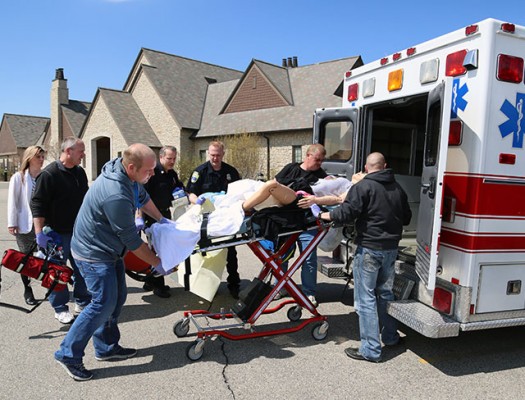
Control Room Co-ordination:
Description
This OS unit is about the ambulance driver coordinating with the central control room for picking the patient from the accident site/home location / other diagnosticcenters, hospitals
Scope
The unit/ task covers the following:
Elements and Performance Criteria
Compliance to duty
To be competent, the user/individual on the job must be able to:
PC1. report to the designated ambulance parking location on time as per the schedule
PC2. start the ambulance for the day on receipt of a call from the control room
PC3. handover the ambulance to the next driver on completion of shift and inform him about operational problems in the ambulance (if any)
PC4. Follow the protocol regarding patient to be accompanied by medical staff, and assistance in communication, emergency handling
Control room coordination
To be competent, the user/individual on the job must be able to:
PC5. receive a call from the control room and get all information pertaining to thepatient location, landmark, type & seriousness of emergency
PC6. intimate the control room post admitting the patient in the hospital/dropping him to specified location
Escalation of problems
To be competent, the user/individual on the job must be able to:
PC7.. the inability to reach the patient location in case of traffic jams or ambulance breakdowns
PC8. immediate requirement of the doctorin case of any emergency situation
Knowledge and Understanding (KU)
The individual on the job needs to know and understand:
KU1. policies on: personnel management, duty reporting procedure and associated MIS compliance
KU2. reporting structure within organization
KU3. control room communication protocol and procedure
KU4. problem escalation procedure
KU5. route planning information system if any
KU6. route knowledge within each city
KU7. ambulance tracking technologieslike GPS (if applicable)
KU8. Access points in hospitals and diagnostic centers
Generic Skills (GS)
User/individual on the job needs to know how to:
GS1. the signboards mentioning about the various places and its directions on theroad
GS2. information provided on the medical equipments
GS3. communicate with the ambulance attendant about any issue while driving
GS4. inform the control room for in case of any support required
GS5. if required , talk with the patient in a calm and friendly manner to soothe him
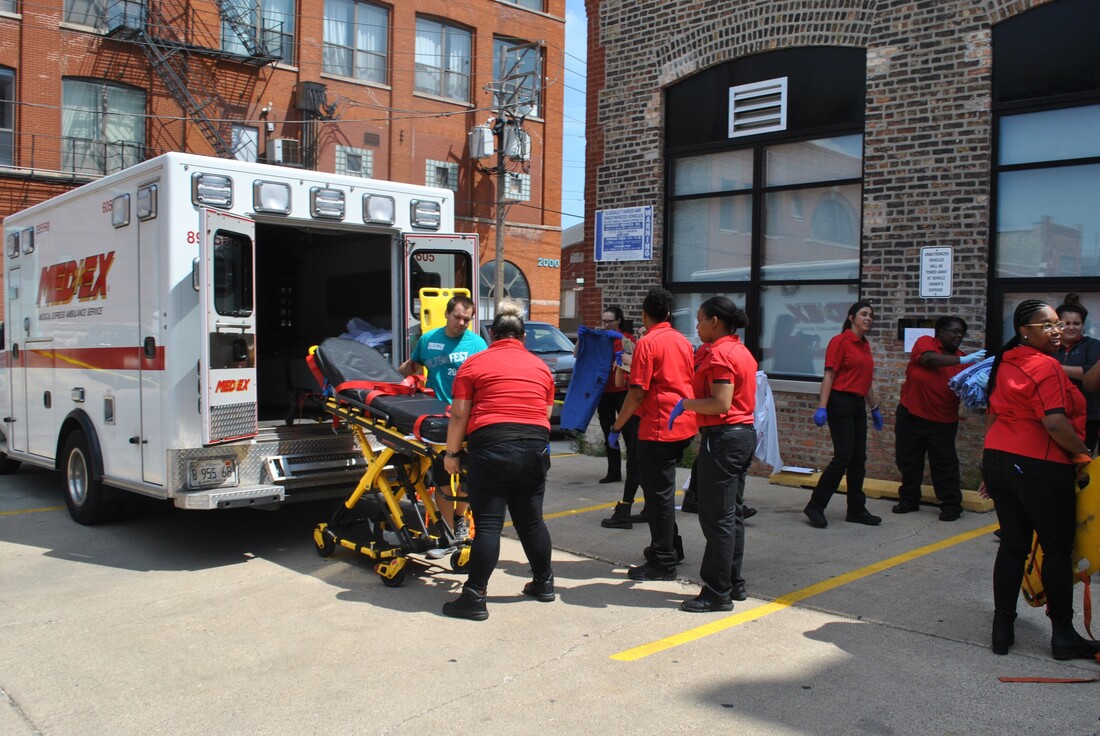
Take the patient to the destination:
Description
This OS unit is about the individual driving safely and taking the patients to hospital/home location using the quickest route
Scope
This unit/ task covers the following:
driving safely to ensure patientssafety
taking the patientsafely using the quickest route traffic regulationsto be followed
conduct with patients and their relatives
Elements and Performance Criteria
Conformance to standard driving practices
To be competent, the user/individual on the job must be able to:
PC1.. confirm all checks have been carried out for road worthiness of the ambulance.
PC2.. confirm all papers and documents including driving license, ambulance documents are available.
PC3.. start the ambulance and before moving re confirm all gauges are functioning including in built navigation system if available
PC4.. change gear smoothly and in good time; coordinate the change of gears with steering control and acceleration
PC5. use the accelerator, steering control and brakes correctly to regulate speed and bring the ambulance to a stop safely
PC6. coordinate the operation of all controls to manoeuvre the ambulance safely and responsibly in all weather and road conditions in forward gear. In reverse gear to take help of assistant.
PC7.. use the windows, wipers, demisters and climate and ventilation controls so that you can see clearly
PC8. monitor and respond correctly to gauges, warning lights and other aids when driving
PC9. in case of any malfunctioning or breakdown, immediately attend to the problem by :- stopping the ambulance at a safe place-carrying out a quick diagnostic check-carrying out minor adjustments or temporary repairs if possible-asking for help in case of major problems by accurately reporting the exact nature of problem so that adequate help is made available at all times while driving to practice good driving habits of gear change,acceleration and braking to ensure obtaining maximum fuel efficiency
Taking the patient
To be competent, the user/individual on the job must be able to:
PC10.. after reaching the patient location , confirmthe name and pull out the stretcher, load the patient on stretcher and transfer the patient safely in the ambulance
PC11. . start the engine, switch on the siren , wearseat belt and ensure that frontrow passenger also wearsthe belt. Also ensure that all doors are locked
PC12. select the destination route of the patient considering the traffic conditions and distance
PC13.. start and adjust air conditioning and as per requirement
PC14. drive through the selected route without violating any traffic norms PC15.. If unsure about the route stop and ask for directions from locals PC16.. avoid using high beam lights in city
PC17. do not use mobile phone while driving
PC18. stop the ambulance and with the help of attendant pull out the patient onstretcher and do the following based on applicability:o if the patient is being taken to hospital in that case , take the patient onstretcher and take him to the hospitalo if the patient is taken to home , then based on the physical condition ofthe patient , provide assistance in taking him to his home
Conformance to trafficregulation
To be competent, the user/individual on the job must be able to:
PC19.. Conformance to state specific traffic regulations such as switch on the siren while moving in traffic change lanes safely at appropriate speed and observing traffic conditions overtake other road users legally, safely and by using correct signaling at all times observe the speed and distance in relation to ambulances ahead, behind and on the sides and maintain a safe distance from other ambulances. signal your intentions correctly to other road users within a safe, systematic routine respond appropriately to all permanent and temporary traffic signals, signs and road markings as well as hand signals of traffic policeman. use indicators and arm signals to signal intentions as per the traffic requirements Use the parking light when stationary, where needed select a safe, legal and convenient place to stop; secure the ambulance safely on gradients using hand brakes and wheel choke check for oncoming cyclists, pedestrians and other traffic before opening your door remain calm and composed during difficult situations like traffic jam, accidents and strictly avoid any feud with fellow commuters and other public.
PC20. . Give preference and right of road usage to children, elderly and differentlyabled. Comply with any related rules, regulations and practices for handlinggeneral public issues as well as show consideration towards stray animals.
To be competent, the user/individual on the job must be able to:
.
Knowledge and Understanding (KU)
The individual on the job needs to know and understand:
KU1. policies on safe driving practices; system and processes to ensure safe driving
KU2. reporting structure
KU3. problem escalation procedure
KU4. safe driving techniquessuch as avoid over speeding and follow prescribed limits maintain safe distance from other vehicles avoid pot holes, stones, otherstrewn objects in case of bridges and underpasses, observe and avoid driving when water level is above danger mark observe movement of pedestriansto avoid collision observe movement of stray animals to avoid collision
KU5. alternate routes in case of natural calamity, road construction work etc.
KU6. troubleshooting techniques in the event of technical problems like wheel changing by using jack
KU7. traffic regulations
KU8. elements of good driving habits for obtaining fuel efficiency :avoid clutch ridingavoid frequent changing of gearsavoid frequent brakingavoid over speedingavoid idling of engine beyond reasonable limitavoid high idling speed setting in engineensure there is no brake bindingobtain right grade of fuel from authorized outlets onlyensure correct quantity of fuel received as per bill
Generic Skills (GS)
User/individual on the job needs to know how to:
GS1. to communicate effectively in local language and also preferably basic spoken Hindi and basic written English
GS2. communicate information in a format that the patient or its relative is able to interpret
GS3. seamlessly coordinatewith control room to ensure timely reaching to patient location and taking to destination
GS4. assist other drivers who require help and take help where needed
GS5. keep oneself updated with the new ambulance technologies and functionalities
GS6. gain knowledge/ experience from driving on of different routes
GS7. Plan and drive based on traffic and road condition using radio links/navigation aids where available
GS8. Plan safe handling of patients Eg aggressive and violent, differently abled patients
GS9. fitness of ambulance for safe driving
GS10. breakdown condition
GS11. accident and emergency situations and medical emergencies
GS12. assess the problem, evaluate the possible solution(s) and use an optimum /best possible solution(s)
GS13. identify immediate or temporary solutions to resolve delays and crisis situations
GS14. resolve conflict while dealing with patient and its relatives
GS15. how to learn from past mistakes to resolve technical and non-technical problems
Assessment Guidelines:
- Criteria for assessment for each Qualification Pack will be created by the Sector Skill Council. Each Element/ Performance Criteria (PC) will be assigned marks proportional to its importance in NOS. SSC will also lay down proportion of marks for Theory and Skills Practical for each Element/ PC.
- The assessment for the theory part will be based on knowledge bank of questions created by the SSC.
- Assessment will be conducted for all compulsory NOS, and where applicable, on the selected elective/option NOS/set of NOS.
- Individual assessment agencies will create unique question papers for theory part for each candidate at each examination/training center (as per assessment criteria below).
- Individual assessment agencies will create unique evaluations for skill practical for every student at each examination/ training center based on these criteria.
- To pass the Qualification Pack assessment, every trainee should score the Recommended Pass % aggregate for the QP.
- In case of unsuccessful completion, the trainee may seek reassessment on the Qualification Pack.

